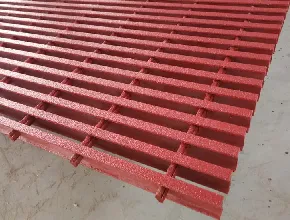loading...
- No. 9, Xingyuan South Street, Dongwaihuan Road, Zaoqiang County, Hengshui, Hebei, China
- admin@zjcomposites.com
- +86 15097380338
- Welcome to visit our website!
sand filter frp
Understanding Sand Filters with FRP Components
Sand filters have long been a cornerstone in water treatment processes, efficiently removing suspended solids and impurities to ensure clean and safe water. In recent years, the integration of Fiber-Reinforced Plastic (FRP) materials into the construction of sand filters has gained significant attention. This article will explore the advantages of using FRP in sand filters, their applications, and their impact on water treatment efficiency.
What are Sand Filters?
Sand filters operate on a simple yet effective principle water is passed through layers of sand, which traps particles and contaminants. This method has been used for centuries, both in municipal water treatment facilities and in decentralized systems. Traditional sand filters generally consist of a concrete or steel structure, which can be subject to corrosion and structural degradation over time.
The Role of FRP in Sand Filters
Fiber-Reinforced Plastic, or FRP, is a composite material made from a polymer matrix reinforced with fibers, commonly glass or carbon. This combination gives FRP remarkable strength-to-weight ratios, corrosion resistance, and durability, making it an ideal material for constructing various components of sand filters.
Advantages of FRP in Sand Filters
1. Corrosion Resistance One of the most significant benefits of FRP is its resistance to corrosion. Traditional materials like steel are vulnerable to rust and degradation when exposed to moist environments and chemicals used in water treatment. FRP, on the other hand, remains unaffected by moisture and many chemicals, ensuring a longer operational life.
sand filter frp

2. Lightweight FRP is much lighter than traditional materials like concrete and steel. This characteristic reduces shipping and installation costs, as lighter components are easier to transport and handle. Additionally, lighter structures can result in lower foundational requirements, further cutting down construction costs.
3. High Strength Despite being lightweight, FRP maintains a high level of strength, making it suitable for supporting heavy loads. This is particularly important in large-scale water treatment facilities where structural integrity is crucial.
4. Moldability FRP can be manufactured into various shapes and sizes, allowing for more design flexibility in sand filter systems. This adaptiveness can lead to more efficient layouts and configurations, optimizing the filtration process.
5. Reduced Maintenance The durability and resistance of FRP to environmental stressors mean that maintenance needs are significantly reduced compared to traditional materials. This efficiency translates into lower operational costs over the lifespan of the sand filter.
Applications of FRP Sand Filters
FRP sand filters are utilized in multiple settings, from municipal wastewater treatment plants to industrial applications and even small-scale residential systems. Their flexible design makes them suitable for both new installations and upgrades of existing systems. In areas with harsh environmental conditions or high chemical exposure, FRP sand filters have proven invaluable in maintaining water quality and meeting regulatory standards.
Conclusion
The incorporation of Fiber-Reinforced Plastic in the design and manufacture of sand filters represents a significant advancement in water treatment technology. With their numerous benefits, including corrosion resistance, lightweight properties, and reduced maintenance needs, FRP sand filters offer an efficient and durable solution for meeting the challenges of modern water management. As the demand for clean water continues to rise globally, the importance of innovative solutions like FRP in sand filter technology will only grow, ensuring safer and more reliable water treatment processes for all.
-
The Rise of FRP Profiles: Strong, Lightweight, and Built to LastNewsJul.14,2025
-
SMC Panel Tanks: A Modern Water Storage Solution for All EnvironmentsNewsJul.14,2025
-
GRP Grating: A Modern Solution for Safe and Durable Access SystemsNewsJul.14,2025
-
Galvanized Steel Water Tanks: Durable, Reliable, and Ready for UseNewsJul.14,2025
-
FRP Mini Mesh Grating: The Safer, Smarter Flooring SolutionNewsJul.14,2025
-
Exploring FRP Vessels: Durable Solutions for Modern Fluid HandlingNewsJul.14,2025
-
GRP Structures: The Future of Lightweight, High-Performance EngineeringNewsJun.20,2025
